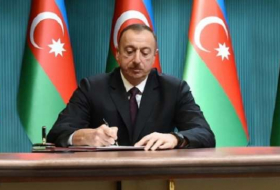“All the countries that became part of the CIS, including Georgia, faced a significant decline in the level of economic activity during the collapse of the Soviet Union and the subsequent period of transformation of economies. The peak of fall of these countries’ economies was observed in 1995, when the reduction in real terms, averaged 48 percent as compared to 1990,” says the survey.
From 2003 to 2007, the economies of most CIS countries reached the 1990 levels and surpassed them, according to the survey.
The last recovered economies were the economies of Tajikistan (by 2013) and Georgia (by 2017), and the economies of Ukraine and Moldova were not completely restored after the collapse of the USSR, says the survey.
From 1990 to 2017, only Azerbaijan and Kazakhstan were able to increase the real GDP by more than two times: economic activity increased by 2.6 and 2.03 times, respectively, in these countries, says the survey.
Thus, according to the survey, the most significant indicators of recovery and growth in economic activity were demonstrated by the oil economies of Azerbaijan and Kazakhstan during the period.
Meanwhile, the structure of the contributions of growth sources in these economies differs sufficiently, therefore, in 2016-2017, the economic growth in the two countries showed different dynamics.
“Among the basic trends in the formation of Azerbaijan’s GDP from 1990 to 2017 one can single out a significant economic trend of introduction of new basic means, mainly connected with extracting capacities,” said the survey. “Throughout the period (with the exception of the year 2008 and 2010-2011) production capacities in Azerbaijan grew at a much higher rate than labor resources.”
The authors of the survey note that in the 2000s, a significant inflow of investment (mainly in the oil and gas industry) and the multiplier effect to non-oil segments gave Azerbaijan’s economy significant impetus for the growth, which weakened by 2015-2016.
The regular contribution to economic growth is also made by fixed assets (from 0.4 to 4 percent in 2012-2016), however, the effect is offset by a negative rate of factor productivity, according to the survey.
“In 2017, the non-oil part of the real GDP showed a 2.7 percent growth, which reflects positive contribution of the business cycle component,” the ACRA said. “In 2017, oil prices played the role of constraining factor, which was expressed in nominal GDP growth (by 0.1 percent). From 2018 to 2019, Azerbaijan’s GDP should be fixed in growth zone, given quite positive expectations regarding the dynamics of oil prices (according to ACRA forecast, in 2018 and 2019, the price of a barrel of Brent crude oil will be $58 and $60, respectively). However, the lack of full sources for such growth will keep the pace at the level of potential growth rates.”
According to the agency, one shouldn’t expect a significant level of overheating in the Azerbaijani economy, which minimizes the risks for gradual weakening of inflationary processes and for the average annual inflation rate’s reaching the level (6-8 percent) established by the Central Bank of Azerbaijan for 2018-2019.
More about:
















































